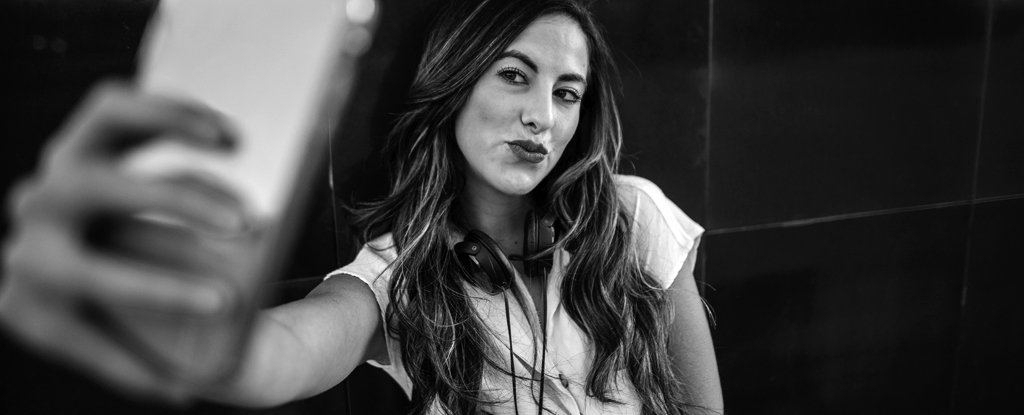Products You May Like
In a time when flaunting your best self on social media has become a norm, narcissistic traits seem to be everywhere.
In today’s slang, off-putting behaviors like entitlement, superiority, and self-congratulating are known as ‘flexing’. Such traits might be more common these days, but being narcissistic is still seen as a pathological personality trait, akin to being sadistic, manipulative, or even psychopathic.
However, a 2021 study of 270 people with a median age of 20 lends more credit to the notion that narcissistic behaviors are not always driven by the same things as psychopathy.
“For a long time, it was unclear why narcissists engage in unpleasant behaviors, such as self-congratulation, as it actually makes others think less of them. Our work reveals that these narcissists are not grandiose, but rather insecure,” said clinical psychologist Pascal Wallisch from New York University (NYU).
“More specifically, the results suggest that narcissism is better understood as a compensatory adaptation to overcome and cover up low self-worth,” added clinical psychologist Mary Kowalchyk, also from NYU.
Psychologists do already distinguish between two rather different types of narcissists: ‘vulnerable narcissists’ who have low self-esteem, attachment anxiety, and are highly sensitive to criticism; and ‘grandiose narcissists’, who have high self-esteem and self-aggrandizement.
This latest research helps to further disentangle the two.
Kowalchyk and team used a series of measures to assess the levels of different traits including narcissism, self-esteem, and psychopathy for each of their participants, and found that flexing behavior is strongly associated with individuals who also have high insecurities and sense of guilt. Those exhibiting psychopathy showed relatively low levels of guilt.
“Narcissists are insecure, and they cope with these insecurities by flexing. This makes others like them less in the long run, thus further aggravating their insecurities, which then leads to a vicious cycle of flexing behaviors,” said Kowalchyk.
This is in contrast to individuals that exhibit grandiose narcissism, who genuinely believe in their own self-importance and do not display signs of insecurity. To the researchers, the difference between the two goes further than just a category distinction.
“We posit that what was previously seen as grandiose narcissism is actually better understood as one behavioral manifestation of psychopathy,” the team wrote in their paper.
They acknowledge further research is needed in a more diverse population across larger time scales to validate their results. But these new findings align with a small study from 2017, in which narcissistic men’s brain scans revealed emotional distress and conflict when they were shown a photo of themselves.
In fact, there have been conflicting studies around whether narcissists do or do not like themselves; by defining the two types of narcissism more precisely, we can arrive at a better understanding of their behaviors, since both types of narcissist may also cause real harm to the people around them in the form of narcissistic abuse.
Pathology aside, narcissistic traits – also thought to be fueled by an increased focus on individualism – can be seen reflected in our society through the ways we write with more “I” than “we”, more self-focused lyrics in our songs, and a shift towards stories based around fame.
Researchers have measured these shifts, too. For instance, endorsement rates for the statement “I am an important person” have increased from 12 to 80 percent in adolescents between 1963 to 1992.
Furthermore, flaunting ourselves on social media is something many of us participate in, collectively forming and feeding insecurities about not fitting in. These behaviors are hardwired into us as an obligatorily social species.
While narcissists are notoriously great at using social media, whether social media can increase narcissism has been less conclusive, but the new paper suggests that “an increase in such behaviors – specifically self-elevation – makes sense within the framework we propose here, as engaging with social media inherently inflicts constant social comparison and appraisal, which could exacerbate insecurities about self-worth.”
So, next time you’re ready to dismiss someone’s boastful behavior as self-importance, it might be worth considering they’re just… insecure.
This research was published in Personality and Individual Differences.
A version of this article was first published in April 2021.
